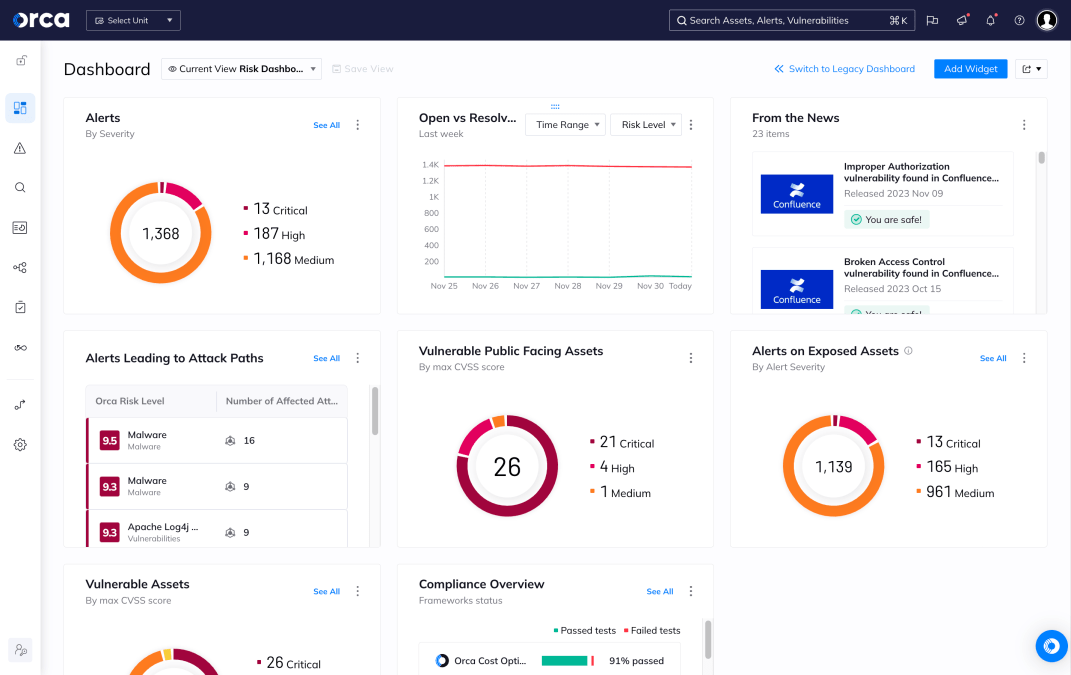An Intrusion Detection System (IDS) is a cybersecurity technology that monitors network traffic, system activities, and data flows to identify suspicious behavior, potential security breaches, and malicious activities in real-time or near real-time. In cloud environments, IDS solutions serve as critical security monitoring tools that provide visibility into threats targeting cloud infrastructure, applications, and data, complementing other security controls like firewalls and access management systems.
Modern IDS implementations have evolved significantly to address the unique challenges of cloud computing, where traditional perimeter-based security models are insufficient. Cloud-based intrusion detection systems must account for dynamic infrastructure, distributed workloads, and the shared responsibility model that defines cloud security architecture.
Why is it important?
Intrusion Detection Systems play a vital role in maintaining robust cybersecurity posture by providing early warning capabilities for security incidents.
In cloud environments, IDS solutions address several critical security challenges. They help organizations meet compliance requirements by providing audit trails and evidence of security monitoring activities. Many regulatory frameworks, including SOC 2, PCI DSS, and HIPAA, require continuous monitoring and detection capabilities that IDS systems can provide.
The importance of intrusion detection has grown as cyber threats become more sophisticated and persistent. Advanced persistent threats (APTs), insider threats, and zero-day exploits often evade preventive security controls, making detection-based approaches essential for comprehensive security coverage. Cloud environments face additional risks from misconfigurations, lateral movement between services, and the expanded attack surface created by distributed architectures.
IDS solutions also support forensic analysis and threat hunting activities by maintaining detailed logs of network and system activities. This historical data proves invaluable for understanding attack patterns, determining the scope of security incidents, and improving future security measures.
How does it work?
Intrusion Detection Systems operate through several key mechanisms designed to identify anomalous or malicious activities:
- Network-based IDS (NIDS) monitor traffic flows, analyzing packet headers, payloads, and communication patterns for threats like port scans or data exfiltration.
- Host-based IDS (HIDS) focus on endpoints and servers, observing logs, file integrity, and system calls to detect insider threats or malware.
IDS solutions use different detection methods:
- Signature-based detection: Compares data against known attack patterns or malware signatures.
- Anomaly-based detection: Establishes a baseline of normal behavior and flags deviations.
- Behavioral and machine learning-based detection: Uses AI to recognize complex patterns and reduce false positives.
In cloud environments, IDS platforms integrate with APIs and native services to monitor VPC flow logs, CloudTrail logs, and application telemetry. Alerts are generated based on suspicious activity, which are then analyzed by security teams or fed into SIEM systems for broader correlation.
Security risks and challenges
Despite their benefits, IDS implementations face several challenges:
- False positives: High alert volumes can overwhelm analysts and create noise.
- Evasion techniques: Sophisticated attackers use encryption, obfuscation, and legitimate tools to bypass detection.
- Encrypted traffic: Limits visibility for traditional IDS tools reliant on packet inspection.
- Performance issues: High-throughput environments may cause latency or dropped packets if IDS systems aren’t properly scaled.
- Management complexity: Cloud deployments often span multiple regions and services, complicating policy enforcement and centralized monitoring.
Additionally, signature-based detection may not catch unknown or evolving threats, while anomaly-based systems may struggle with precision and context.
Best practices and mitigation strategies
To maximize IDS effectiveness, organizations should:
- Use a hybrid approach combining NIDS and HIDS for broader coverage.
- Continuously tune detection rules to reflect changing threats and reduce noise.
- Integrate IDS with SIEM and SOAR platforms for centralized analysis and response.
- Conduct regular penetration testing and red teaming to evaluate IDS performance.
- Implement network segmentation and least-privilege access to contain breaches.
- Leverage cloud-native monitoring services in tandem with third-party IDS solutions.
- Encrypt communications but enable traffic logging at ingress/egress points to maintain visibility.
- Train security analysts on interpreting IDS alerts and conducting incident investigations.
IDS effectiveness hinges on proper configuration, integration with broader detection and response strategies, and continual optimization.
How Orca Security helps
The Orca Cloud Security Platform addresses the complexities and limitations of traditional IDS through its agentless-first, cloud-native application protection platform that delivers continuous monitoring, threat detection, and risk prioritization across multi-cloud environments.
With Orca, organizations benefit from:
- Real-time and agentless threat detection that covers active threats, suspicious activity, and a comprehensive range of risks
- Cloud-native log analysis for insights from AWS CloudTrail, Azure Activity Log, Google Cloud logs, and other cloud services
- Risk prioritization that focuses alerts based on severity and business impact
- Unified visibility across multi-cloud environments of AWS, Azure, Google Cloud, Oracle Cloud, Alibaba Cloud, and Kubernetes
- Automated multi-cloud compliance with 185+ built-in frameworks covering regulatory and industry standards
Orca enables security teams to detect and respond to intrusions faster and more efficiently without relying on traditional IDS appliances or endpoint agents.



